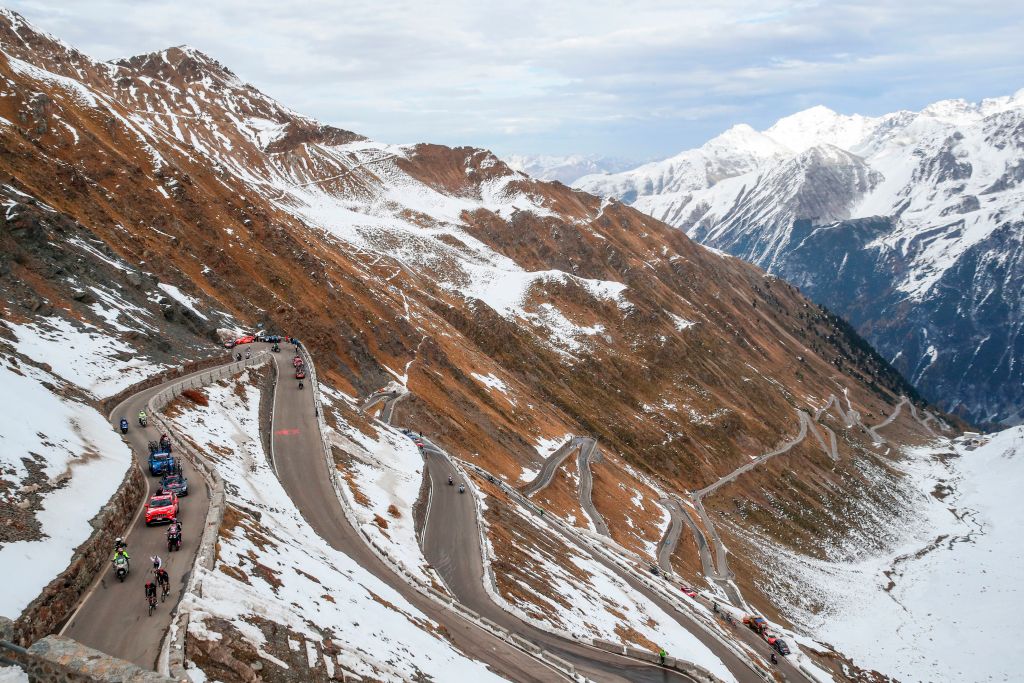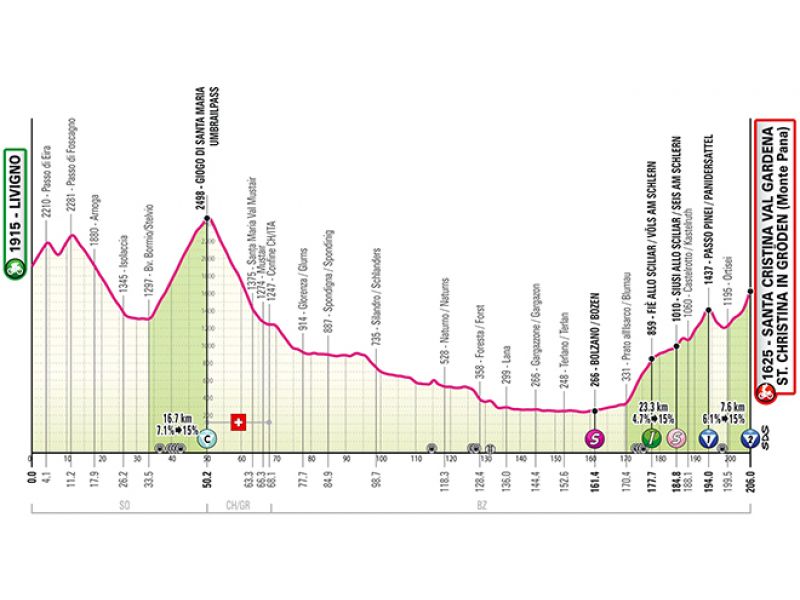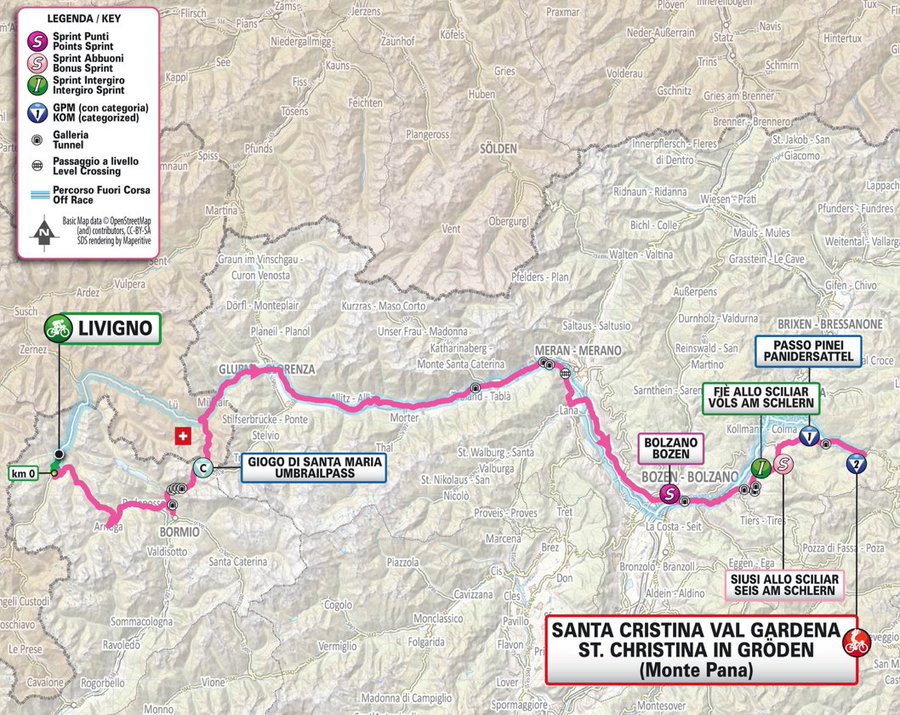Risk of avalanches forces Giro d'Italia to cut the Stelvio Pass from stage 16
Umbrail Pass becomes the new Cima Coppi as race heads into Switzerland to avoid snow-covered summit

The Passo dello Stelvio has been removed from the route of stage 16 of the Giro d’Italia due to the risk of avalanches on the 2,758m-high Alpine mountain pass.
RCS Sport announced on Tuesday that the Stelvio has been replaced by the 2,489m-high Umbrail Pass, with the stage route heading into Switzerland for a loop around the Stelvio, rather than climb to the snow-covered summit.
Rumours of the Stelvio’s removal had been circulating for several weeks amid local media reports detailing the conditions on the mountain pass and the efforts of local authorities to clear the road.
Last week, the head of the local avalanche commission told Italian news agency ANSA that the Giro would be unable to cross the Stelvio due to the risks posed by the banks of snow on the roadside.
On Tuesday, RCS Sport formally announced that the Giogo di Santa Maria/ Umbrailpass would replace the Stelvio as the opening climb on the stage. The ascent also replaces the 2,758m Stelvio as the Cima Coppi, the highest point of the 2024 Giro d’Italia.

“The recent snowfalls on the Passo dello Stelvio and the subsequent rise in temperatures are increasing the risks of avalanches,” RCS Sport said in a statement.
“The Giro d’Italia organisation, to safeguard the security of the Carovana Rosa, has thus decided to modify the route of the stage.”
Get The Leadout Newsletter
The latest race content, interviews, features, reviews and expert buying guides, direct to your inbox!
Despite the modification, this version of the stage retains the broad characteristics of its first iteration, starting in Livigno as planned and then tackling the climbs of Passo Pinei and the final haul to the finish at Monte Pana above Santa Cristina Val Gardena. The total distance rises from 202 km to 206 km.
The opening kilometres of the stage are identical, with the gruppo riding short, unclassified sections of the Passo di Eira and Passo di Foscagno before descending to Bormio. Rather than climbing all the way to the top of the Stelvio, the race instead ascends as far as the Umbrail Pass and then turns left into Switzerland. The climb is 16.7km at an average gradient of 7.1%.
After descending for an 18 km detour into Switzerland, the course rejoins the original route at Silandro, with a shade over 100km remaining.
The road climbs for the bulk of the final 40km, tackling the category 1 Passo Pinei (23.3km at 4.7%) and the new summit finish on the category 2 Monte Pana (6.5km at 6.1%). The final 2km of the stage are wickedly steep, with ramps of 16% and an average gradient just shy of 12%.
The Stelvio has previously been omitted from the route due to weather conditions at the summit of the pass in 1984, 1988 and 2013.


Barry Ryan was Head of Features at Cyclingnews. He has covered professional cycling since 2010, reporting from the Tour de France, Giro d’Italia and events from Argentina to Japan. His writing has appeared in The Independent, Procycling and Cycling Plus. He is the author of The Ascent: Sean Kelly, Stephen Roche and the Rise of Irish Cycling’s Golden Generation, published by Gill Books.